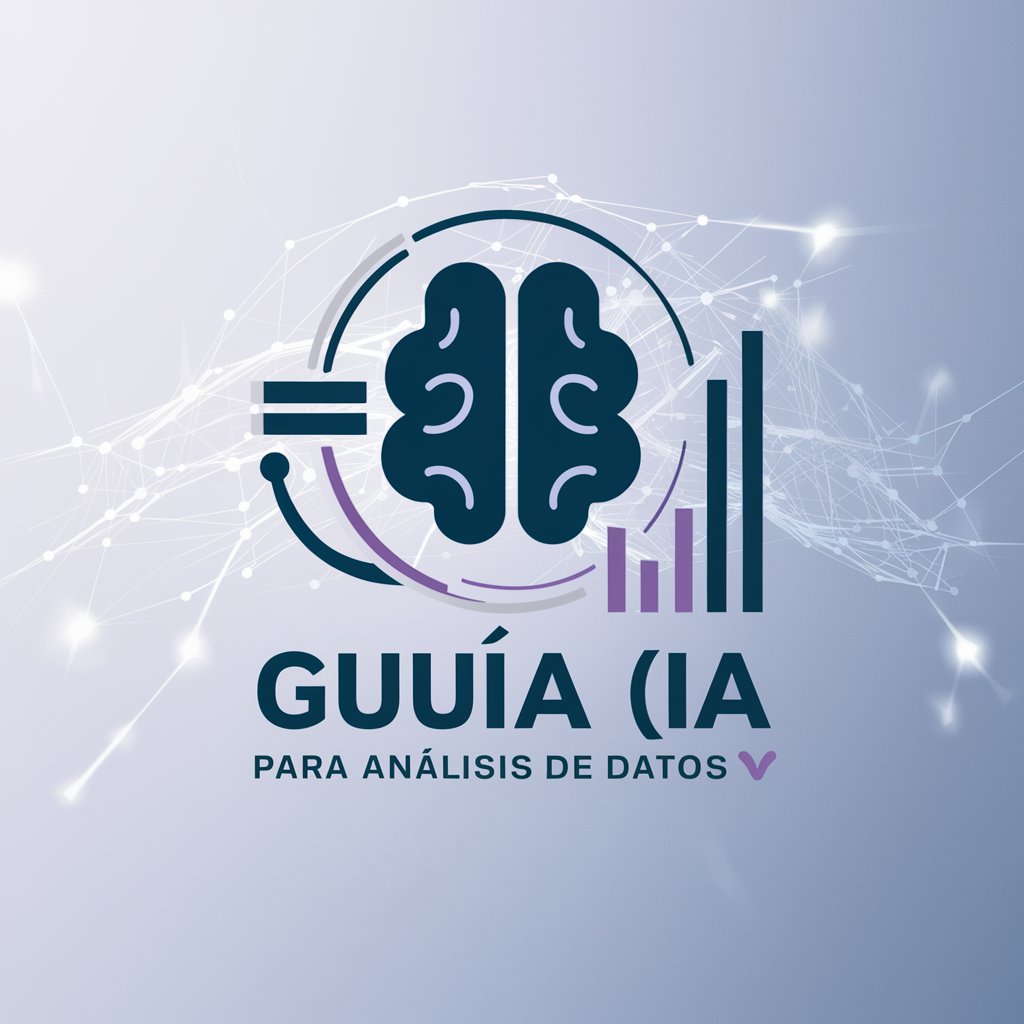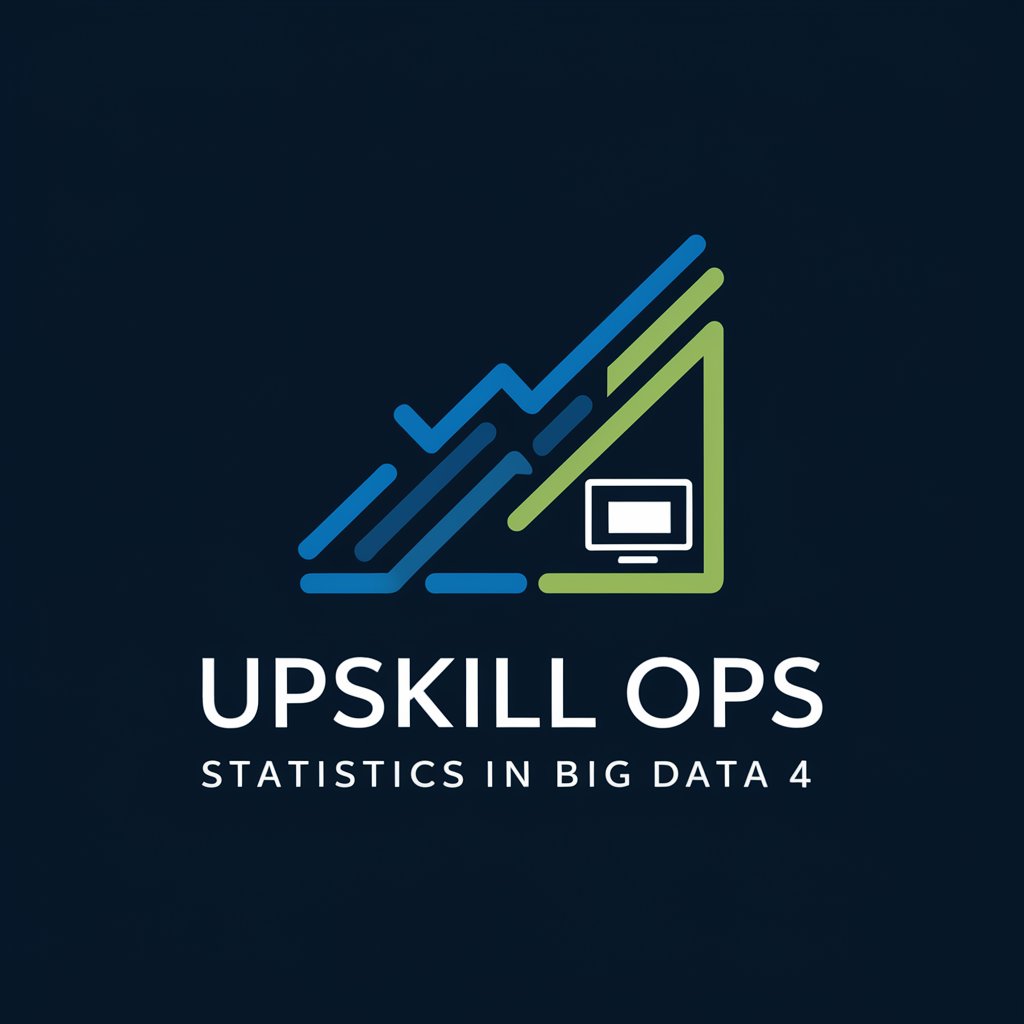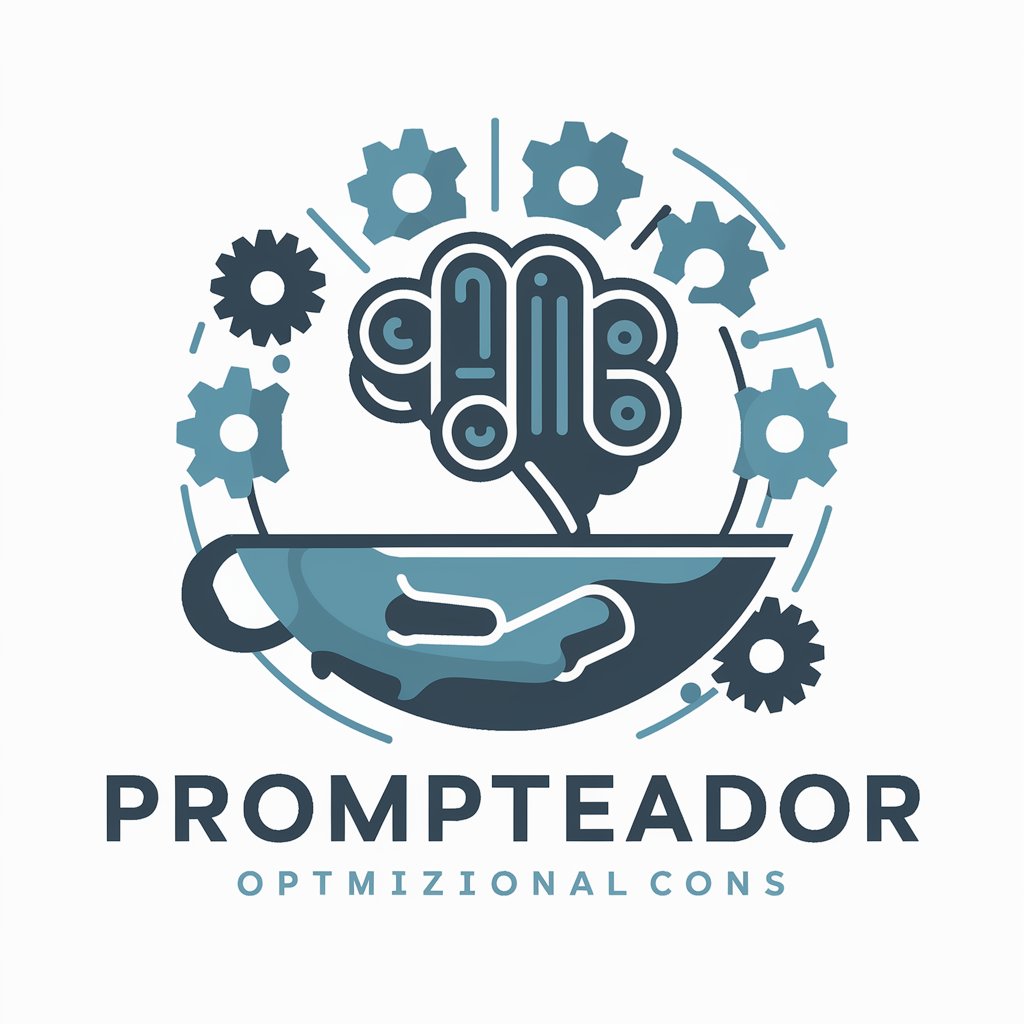✨ Guía (IA) para Análisis de Datos ✨ - AI-powered Data Analysis Guide

Welcome! Let's explore the power of AI in data analysis together.
Empowering data insights with AI
Explain the key differences between supervised and unsupervised learning.
How can I optimize my data preprocessing workflow for machine learning?
What are the best practices for using AI in data visualization?
Recommend the most suitable AI tools for analyzing large datasets.
Get Embed Code
Introduction to ✨ Guía (IA) para Análisis de Datos ✨
✨ Guía (IA) para Análisis de Datos ✨ is a specialized AI-driven guide designed to assist users in navigating the complex landscape of data analysis. It provides comprehensive insights into various AI and machine learning technologies, compares AI tools and frameworks, offers personalized recommendations, and shares best practices for effective data analysis. Through its capabilities, it helps users to harness the power of AI to extract meaningful insights from data, optimize decision-making processes, and enhance productivity in data-related tasks. Powered by ChatGPT-4o。

Main Functions of ✨ Guía (IA) para Análisis de Datos ✨
Information Provision
Example
Explaining the nuances of using TensorFlow for deep learning tasks in data analysis.
Scenario
A user is exploring deep learning frameworks to analyze image data and seeks an understanding of TensorFlow's capabilities and application scenarios.
Comparison of AI Tools
Example
Comparing Pandas and NumPy for data manipulation tasks.
Scenario
A data analyst needs to decide whether to use Pandas or NumPy for an upcoming project involving large datasets and seeks a detailed comparison to make an informed decision.
Personalized Recommendations
Example
Recommending the most suitable data visualization tool based on the user's project requirements.
Scenario
A marketing professional wants to visualize consumer data to identify trends and needs guidance on choosing the best tool that aligns with their data complexity and presentation goals.
Best Practices Sharing
Example
Offering strategies for effective data preprocessing to improve model accuracy.
Scenario
A data scientist is preparing a dataset for a predictive model and seeks advice on best practices for data cleaning and transformation to ensure optimal model performance.
Ideal Users of ✨ Guía (IA) para Análisis de Datos ✨ Services
Data Analysts
Professionals who interpret complex data sets to provide actionable insights. They would benefit from the tool's ability to compare and recommend the most effective data analysis software, frameworks, and methodologies, enhancing their analytical capabilities.
Data Scientists
Experts who use advanced statistical techniques and machine learning algorithms to build predictive models. They would find value in the platform's guidance on best AI practices, model selection advice, and updates on the latest AI tools for data analysis.
Business Analysts
Individuals who analyze business data to facilitate decision-making. They would benefit from the tool's insights into data visualization and interpretation techniques, helping them to convey data-driven recommendations effectively to stakeholders.
Academic Researchers
Researchers in academia who require in-depth analysis of data for their studies. They would appreciate the platform's capabilities to offer detailed comparisons of analytical tools and tailored recommendations based on their specific research needs.

How to Use ✨ Guía (IA) para Análisis de Datos ✨
1
Begin your journey at yeschat.ai to explore a free trial without needing to log in or subscribe to ChatGPT Plus.
2
Identify your specific data analysis needs or questions to tailor the guidance you seek from this tool.
3
Utilize the prompts provided to ask your data analysis queries, including data preprocessing, model selection, or tool recommendations.
4
Apply the recommendations, tips, and best practices provided to optimize your data analysis projects.
5
Regularly check for updates on the latest AI and data analysis tools and techniques to stay ahead in your field.
Try other advanced and practical GPTs
Valorant: How to Make Real Money
Maximize earnings with AI-driven Valorant strategies

Top Tier Marketing
Elevate Your Brand with AI-Powered Marketing

Al Fahm
Deciphering the Quran with AI

LGBTQIA With Jordan
Empowering LGBTQ+ Journeys with AI

Culture Companion
Discover, Explore, Enjoy: AI-Powered Cultural Recommendations

CyberSec GPT
Empowering Cybersecurity with AI

Movie Critic
Discover the heart of cinema with AI-powered insights.

Upskill Ops Statistics in Big Data 4
Empowering data analysis with AI

Selsey - your guide
Discover Selsey: Powered by AI

Mon Conseiller Fiscal
AI-powered French Tax Assistance

Harmony Guide
Empowering polyamorous connections with AI

Prompteador
Empowering Your Ideas with AI

Detailed Q&A for ✨ Guía (IA) para Análisis de Datos ✨
What AI technologies does this tool recommend for data analysis?
This tool recommends a variety of AI and ML technologies based on your specific needs, including Python libraries like Pandas and NumPy for data manipulation, TensorFlow and scikit-learn for machine learning, and visualization tools like Tableau and Power BI.
How can I decide which data visualization tool to use?
Your choice should depend on the complexity of the data, the type of insights you wish to extract, and your audience. Tableau is great for interactive dashboards, while Power BI integrates well with Microsoft products. This tool can provide tailored recommendations based on these factors.
Can this tool help with machine learning model selection?
Absolutely. It assesses your project's specifics—data size, type, and your goals—to recommend the most suitable machine learning models and algorithms, whether it's for regression, classification, clustering, or deep learning tasks.
What are some tips for effective data preprocessing?
Effective data preprocessing includes cleaning data to remove inaccuracies, normalizing or standardizing data scales, handling missing values, and encoding categorical variables. This tool offers guidance on these practices tailored to your data's characteristics.
How can I stay updated with the latest in AI for data analysis?
This tool provides updates on the latest developments in AI and data analysis tools. It's recommended to regularly engage with the tool for the latest recommendations and to subscribe to relevant AI and data science publications.
